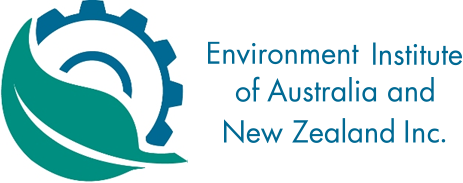-
Member Login
- Home
- About
- Institute Groups
- Australian Divisions
- New Zealand Chapter
- Special Interest Sections
- Membership
- Events
- News & Publications
- Institute Programs
- Resources
- Jobs Board
- Contact Us
- Site Info
Good Practice in Impact Assessment - Resources
Good Practice in Impact Assessment - Resources
A set of resources have been developed by the Special Interest Sector for Impact Assessment (SIS-IA) to support effective implementation of impact assessment (IA). Documents have been prepared by experienced IA practitioners within the SIS-IA to provide guidance on good practice in IA.
While they have been written to apply generally in Australia and New Zealand, IA practitioners should also consider the specific requirements of the jurisdiction within which they operate.
Guidelines for impact assessment
These guidelines describe the general principles which should govern and guide the IA process and the practices that should be followed at each stage of the IA process:
- Screening – to determine the appropriate form of IA for a project, in particular whether it justifies the preparation and publication of a formal environmental impact statement (EIS) or similar public document.
- Scoping – to determine the environmental issues relevant to a project and the points in the decision-making process when these issues need to be addressed.
- Technical analysis and assessment – in terms of understanding the environmental effects (adverse and beneficial) of a proposal, comparing options for achieving the proposals objectives, and identifying mitigation measures or offsets for adverse impacts.
- Reporting and stakeholder involvement – commonly through an EIS or similar document for government agency and community response, although other forms of consultation may also be implemented, including measures implemented outside the statutory review process.
- Independent review – review of the EIS or other public document and agency/ community responses by the authority responsible for administering the statutory review process.
These guidelines are aimed at all environmental practitioners involved in IA, in particular, those relatively new to the process as well as proponents and others who are involved or anticipate being involved in IA.
Good Practice Statements on Environmental and Social Impact Assessment
This set of 25 good practice statements was prepared by a committee of IA practitioners in the South-East Queensland Division of EIANZ. They are aimed at more experienced IA practitioners and set out the characteristics of good practice IA so that it:
- Achieves its purpose
- Assists with orderly development
- Rigorously evaluates impacts
- Achieves desired performance outcomes.
The committee also looked at opportunities for reform of IA in Queensland. Again, many of the issues considered also appear to be applicable to other jurisdictions. The full set of reports is available below.
Good practice scoping in impact assessment
Scoping is the process of identifying and prioritising the key issues associated with a project to be assessed in an impact assessment and the extent of work that needs to be undertaken to address those issues. The SIS-IA considers scoping is a process that is important to effective IA, but not always suitably undertaken.
The SIS-IA has prepared a set of ‘good practice’ guidelines to encourage a more consistent and effective approach to scoping across all jurisdictions. This is supported by a background paper which sets out current issues and concerns with scoping practices.
Guidelines for selecting an environmental consultant
The purpose of this document is to assist proponents (clients) to select and engage consultants who provide advice about the planning, assessment and implementation of development projects or other activities.
Choosing the right consultant can mean the difference between the success or failure of a project. Impact assessment is a specialist field and a good consultant can save considerable time and money by:
- reviewing project design for any ‘show-stoppers’ that would prevent a project receiving government approval
- ensuring environmental studies are targeted towards the issues that are important, and avoiding unnecessary work
- steering proponents through the regulatory processes in the most efficient way
- assisting with government negotiations to reduce project risk from a refusal or an approval with cost-prohibitive conditions.
EIANZ Position Statement – Incorporating environmental considerations into development projects
The above draft position statement was approved by the EIANZ Board subject to some final minor edits. The final paper is expected to be published soon.
Other resources
There are a range of impact assessment publications and other resources on the Resources page on the International Association for Impact Assessment website.
Feedback
The SIS-IA welcomes any feedback on the above documents and on topics for future good practice documents. Suggestions and feedback can be emailed to the Chair of the SIS-IA, Lachlan Wilkinson.
We acknowledge and value the rights and interests of Indigenous Peoples in the protection and management of environmental values through their involvement in decisions and processes, and the application of traditional Indigenous knowledge.

